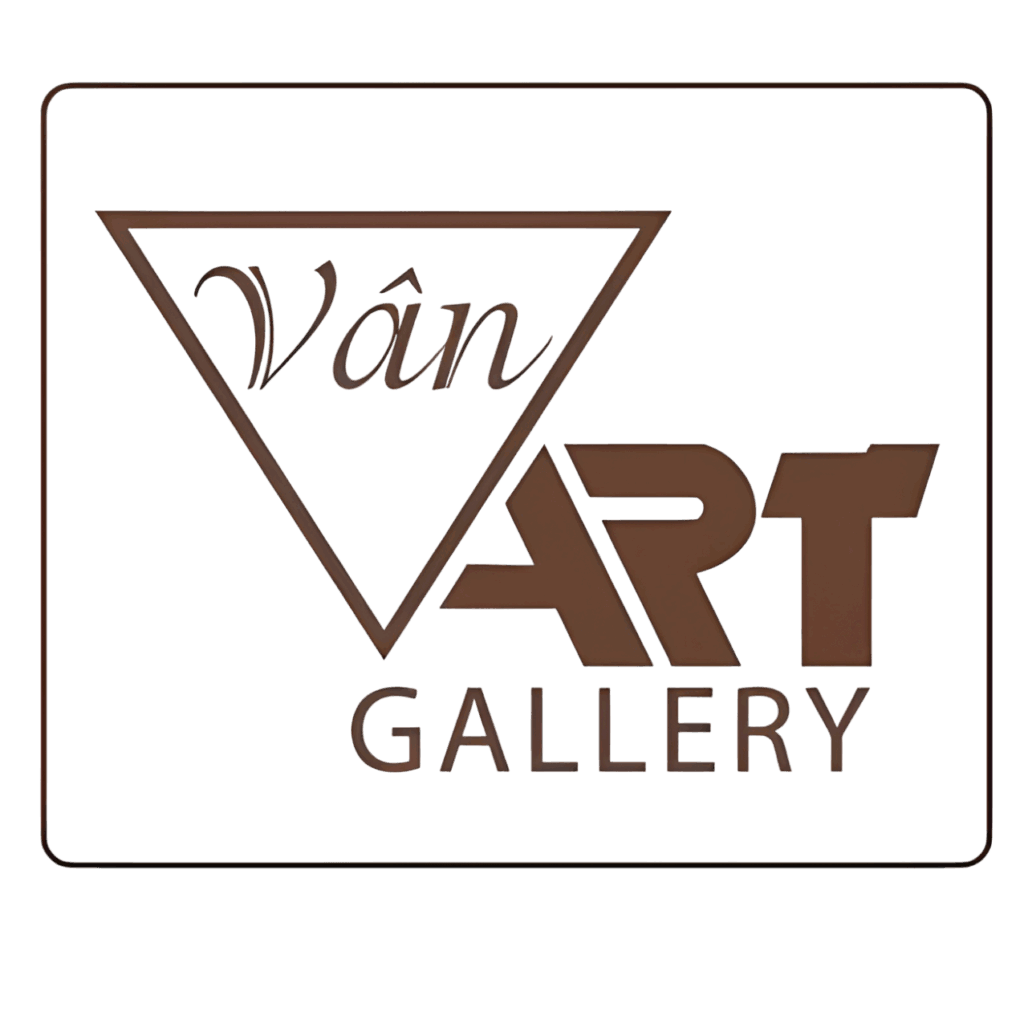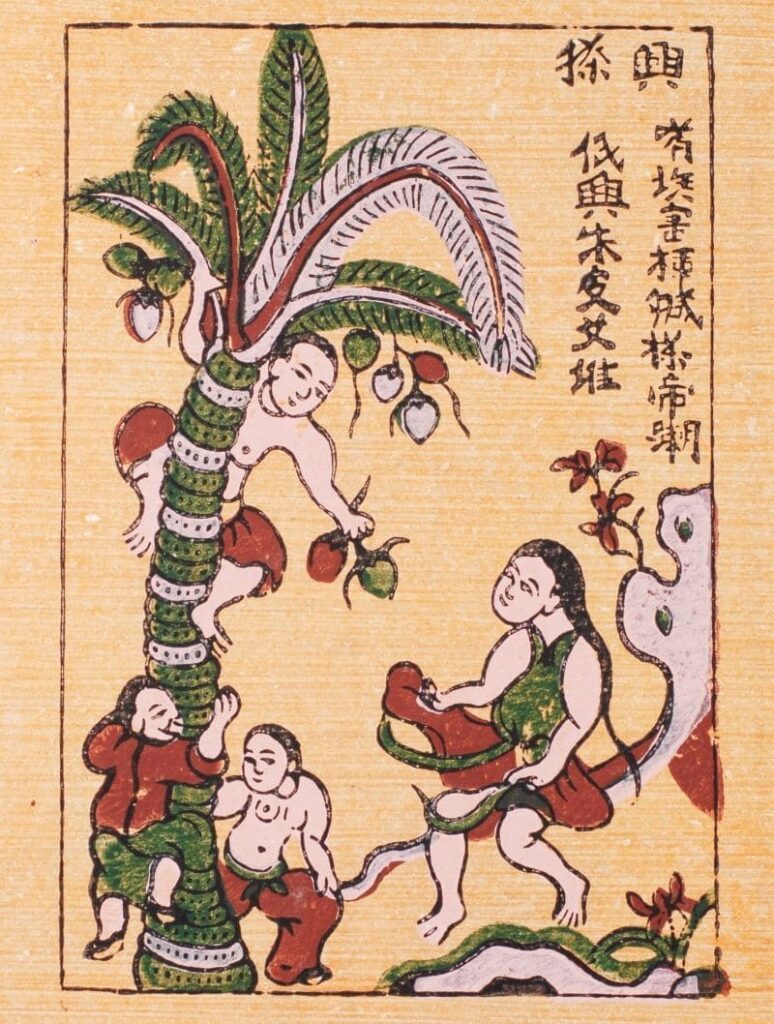The Đông Hồ painting Hứng Dừa brings forth simple, rustic strokes yet brims with profound messages about family bonds and the dignity of labor. If you’re seeking a story about the Đông Hồ folk art piece Hứng Dừa to gain a deeper understanding of Vietnam’s national heritage, this article will guide you through its journey—from origins to enduring value. Join us in uncovering the layers of meaning behind these vivid images, which have captivated generations and continue to resonate in Vietnam art gallery. This artwork, part of Vietnam’s rich folk painting tradition, serves as a window into the agrarian life of the Red River Delta, where everyday scenes like coconut harvesting symbolize resilience, harmony, and cultural continuity. As we delve deeper, you’ll discover how such seemingly straightforward depictions encode social norms, moral lessons, and aesthetic principles that have shaped Vietnamese identity for centuries.
What is Dong Ho Folk Painting? The Foundation for Đông Hồ Hứng Dừa
Before diving into the specifics of the Đông Hồ painting Hứng Dừa, it’s essential to grasp the essence of Đông Hồ folk paintings—a treasured gem in Vietnam’s folk art heritage. These are not merely decorations for Tet holidays; they serve as vibrant chronicles depicting rural labor, customs, and life philosophies of ancient Vietnamese people. Originating from the 17th century in Đông Hồ village, Thuận Thành district, Bắc Ninh province—a fertile area along the Đuống River—these paintings have evolved from local crafts to symbols of national pride, recognized by UNESCO as an Intangible Cultural Heritage in 2010. Their creation process, involving woodblock printing on dó paper with natural dyes, reflects a harmonious blend of human ingenuity and environmental resources, making them enduring artifacts of cultural expression.
Distinctive Features of Dong Ho Folk Paintings
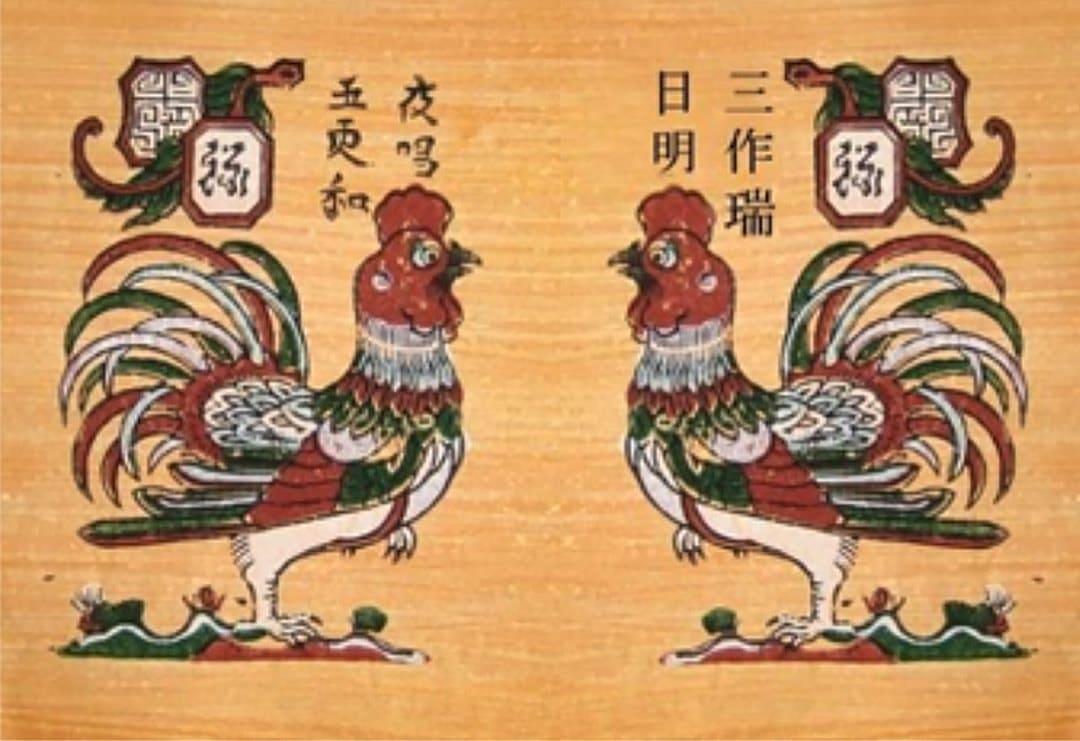
Đông Hồ folk paintings are renowned for their simplicity, vibrancy, and cultural depth, qualities that form the bedrock for masterpieces like Hứng Dừa. Crafted through a meticulous handmade process, they use woodblocks carved with intricate designs, printed on dó paper (made from the bark of the dó tree), and colored with natural pigments: fiery red from hibiscus flowers, deep black from charcoal, and serene blue from indigo leaves. This eco-friendly method not only ensures longevity but also imbues each piece with an organic vitality that synthetic colors cannot replicate. The paintings’ accessibility—affordable for common folk during Tet—democratized art, allowing cultural narratives to permeate every household.
Here are the key characteristics that make Đông Hồ folk paintings an iconic cultural symbol:
- Simple Yet Profound Motifs: The strokes are bold and unadorned, eschewing intricate details to focus on core messages. They often portray rural activities, festivals, or moral tales, using exaggeration for humor and emphasis, such as oversized figures to highlight human endeavor.
Everyday Themes Close to Life: From “Đánh Cờ” (Playing Chess), satirizing social vices, to “Em Bé Chửa” (Pregnant Child), celebrating motherhood, each painting slices into daily existence, blending realism with whimsy to convey ethical lessons. - Traditional Handcraft Process: Involves carving woodblocks, applying powder colors, and sun-drying—demanding artisan skill to preserve the craft’s authenticity. This labor-intensive method underscores the value of manual work, mirroring the themes in the paintings themselves.
- Spiritual and Festive Values: Hung during Lunar New Year to ward off evil and invoke prosperity, they embody folk beliefs, such as using red hues for luck and protection, integrating art into ritualistic life.
Thanks to these elements, Đông Hồ folk paintings transcend mere visuals to become cultural icons. In the modern era, as urbanization threatens traditional crafts, understanding Đông Hồ helps us appreciate fading values. From this foundation, the painting Hứng Dừa emerges as a vivid testament to the resilience of Vietnamese traditions, encapsulating family dynamics and rural harmony in a single frame. Its enduring appeal lies in how it bridges past and present, reminding us of the artistry in everyday labor and the poetry in communal bonds.
History of Dong Ho Hung Dua: From Rural Labor to Cultural Symbol
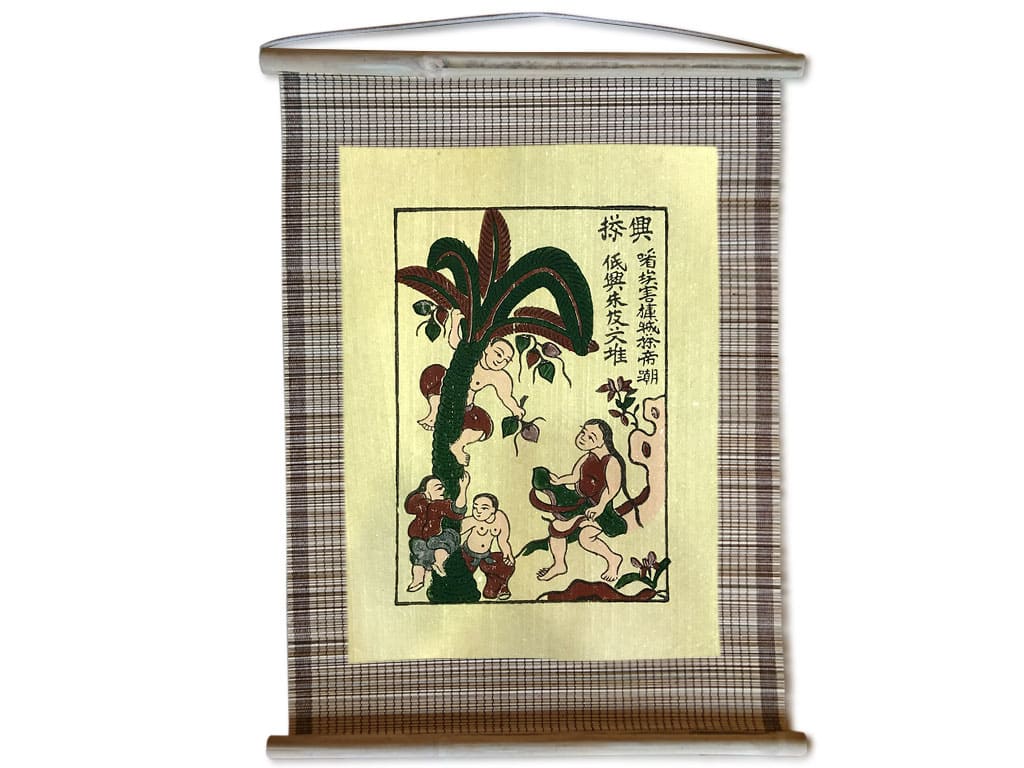
The history of the Đông Hồ painting Hứng Dừa is deeply intertwined with the rhythms of life in northern Vietnam’s Red River Delta, where coconut trees symbolize endurance and abundance. This artwork dates back to the 18th-19th centuries, emerging within the broader stream of Đông Hồ folk paintings as a tribute to labor and familial love. Coconut harvesting, a perilous yet essential task, represented not just livelihood but also metaphors for human strength and unity, evolving from local depiction to national emblem over time.
Origins and Emergence in Historical Social Context
During feudal times, when agriculture anchored the economy, climbing coconut trees was a hazardous job requiring strength and agility. The history of Đông Hồ Hứng Dừa originates from the artisans of Đông Hồ village, who immortalized this labor to honor farmers. The painting transcends mere realism, embedding philosophies like “Tam Cương” (Three Bonds: ruler-subject, father-son, husband-wife), emphasizing the father’s role as family pillar.
Let’s trace its developmental journey:
- 17th-18th Centuries: Initial Phase: As Đông Hồ village flourished in printmaking, labor themes like coconut harvesting were prioritized to mirror local life. The coconut tree—icon of riverine regions—became a recurring motif, symbolizing steadfastness against floods and storms.
- 19th Century: Creative Peak: Artisans from families like the Đào lineage incorporated Nôm poetry, such as “Khen ai khéo dựng lên dừa, Đấy trèo đây hứng cho vừa một đôi” (Praise to who planted the coconut tree, One climbs, one catches, a perfect pair), adding literary layers and elevating the artwork’s depth.
- 20th Century: Spread and Challenges: Mass-produced for Tet, the paintings gained popularity, but wars and modernization threatened the craft. Yet, Hứng Dừa persisted, adapting to serve as cultural propaganda during resistance eras, reinforcing family unity amid turmoil.
In the broader socio-historical context, this painting reflected feudal society’s emphasis on hierarchical harmony while subtly advocating gender cooperation in labor—a progressive nuance for its time. As Vietnam transitioned from colonialism to independence, Hứng Dừa evolved into a symbol of rural resilience, capturing the nation’s agrarian roots and collective spirit. Today, it stands as a bridge between past traditions and contemporary appreciation, reminding urban dwellers of their cultural ancestry.
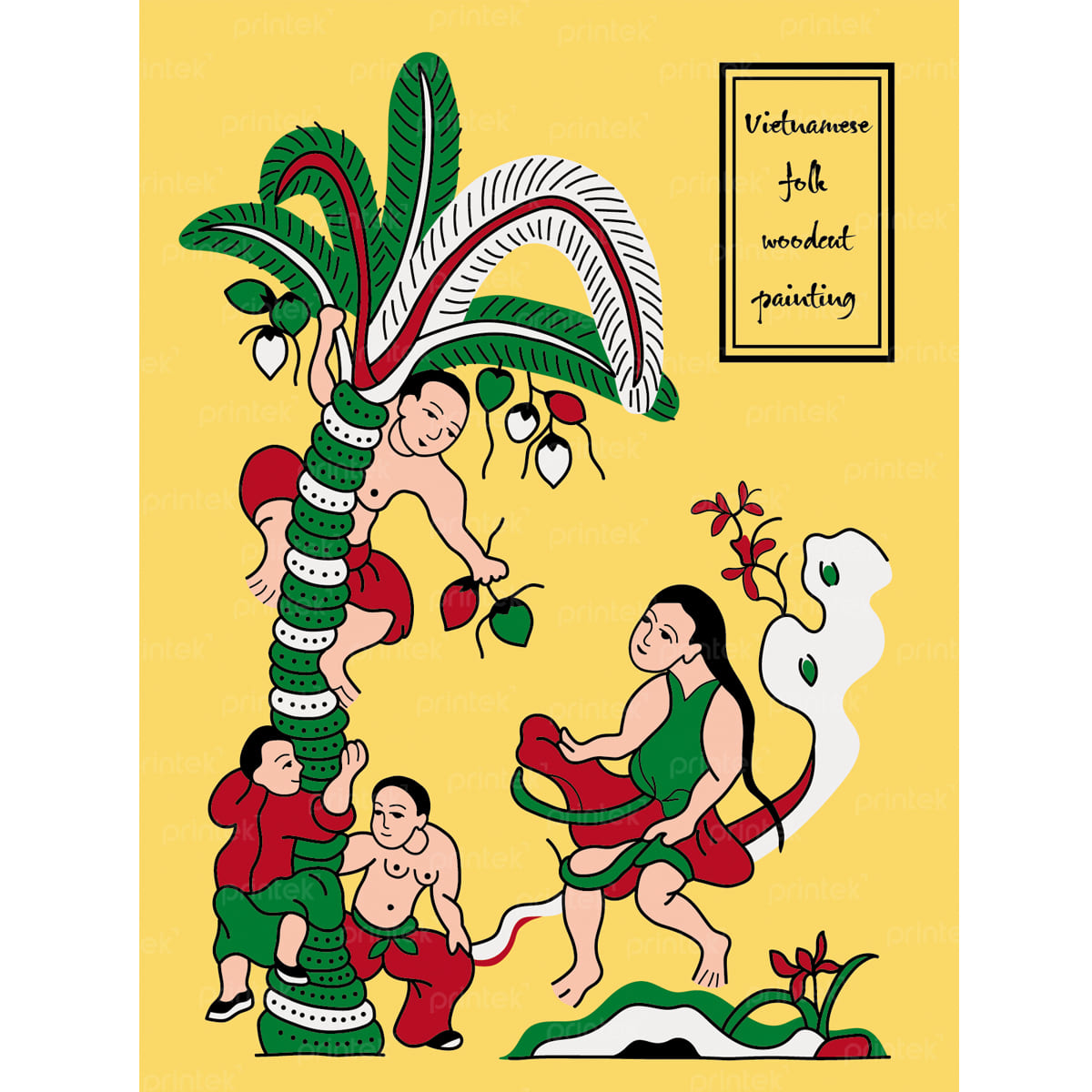
Meaning of Dong Ho Hung Dua: Family Harmony and Labor in Vibrant Imagery
At its core, the meaning of Đông Hồ Hứng Dừa lies in celebrating familial harmony and the nobility of rural labor, encapsulated in a scene of a father climbing a coconut tree while his wife and children assist below. This artwork, beyond its visual charm, encodes Confucian values and folk wisdom, making it a multifaceted cultural artifact that continues to educate and inspire.
Analyzing the Meaning of This Painting Through Imagery
In the context of “Tam Cương” (Three Bonds), the meaning of Hứng Dừa underscores the father’s role as a “stout coconut trunk”—withstanding storms to nurture his family. Each element carries symbolic weight:
- Strength and Sacrifice of the Father: Climbing the tree—a risky endeavor—symbolizes the hardships men endure. It reminds: “The father is the pillar, braving winds to bring sweet fruit to his children,” highlighting paternal duty in a patriarchal society.
- Empathy and Support of the Wife: Tucking up her skirt to catch coconuts represents shared burdens and gender equality in labor, praising rural women’s resilience and ingenuity.
- Emulation Spirit of Children: Clinging to the tree base, eager to learn from their father, imparts lessons on filial piety and perseverance.
- Prosperity and Family Happiness: Falling coconuts like rain evoke bountiful harvests and fulfilled lives—a blessing for unity and abundance.
The Nôm poem “Khen ai khéo dựng lên dừa…” enhances the meaning, honoring the skill and bravery of the “pair”—a couple in unison. In modern society, Hứng Dừa remains relevant: It advocates honest labor amid technology’s rise and stresses family bonds in building sustainable communities. Collectors hang it in living rooms as daily reminders of roots, while educators use it to teach cultural heritage.
Furthermore, the painting’s meaning extends to environmental themes—the coconut tree as nature’s gift—urging conservation in an era of climate change. Its humor, seen in exaggerated poses, adds lightness, making profound lessons palatable. Thus, Hứng Dừa isn’t static; it evolves, offering fresh insights to each generation.
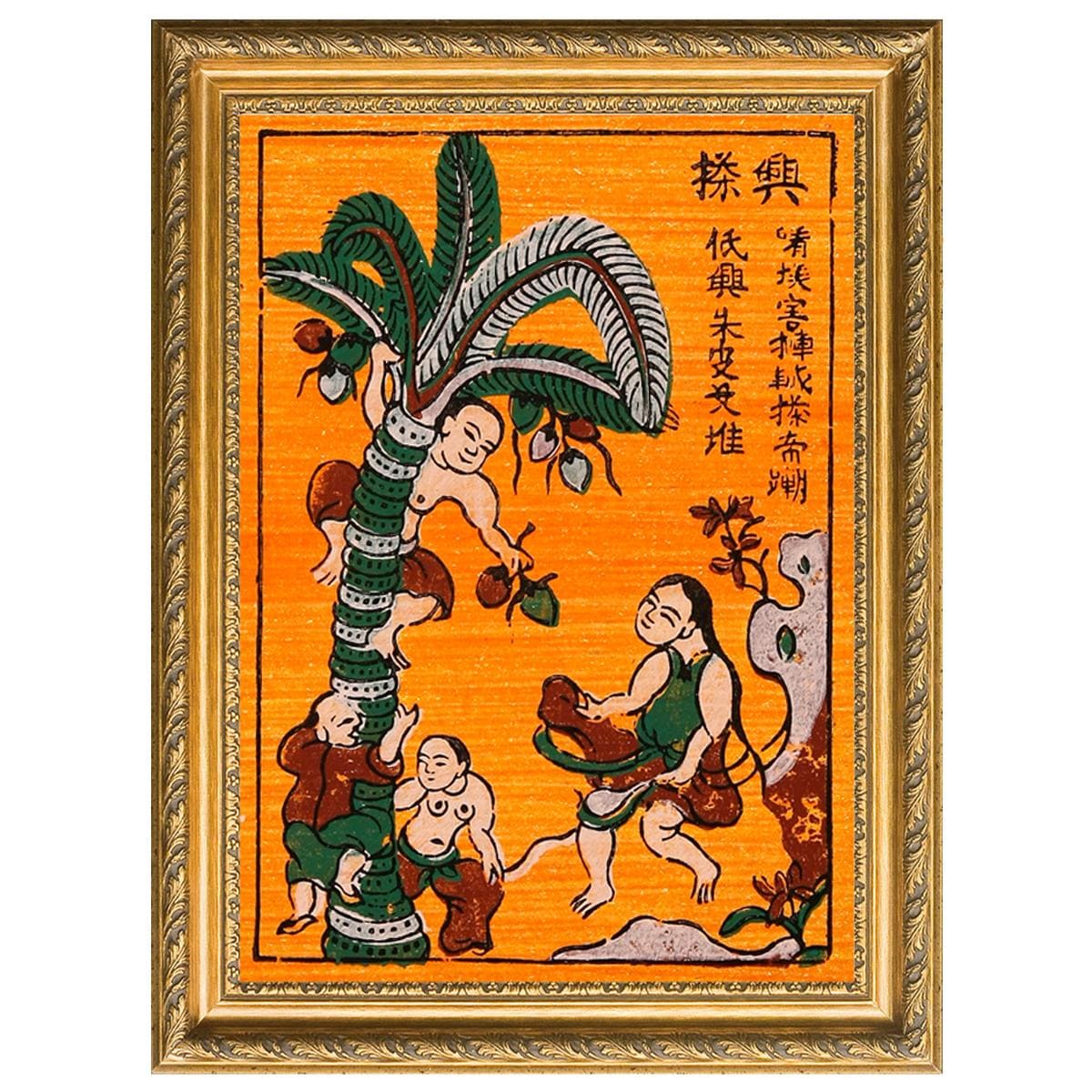
Preserving Đông Hồ Hứng Dừa for Future Generations
In the digital age, preserving Đông Hồ paintings like Hứng Dừa is urgent, especially as fewer artisans sustain the craft amid market shifts. From Tet staples to endangered heritage, these artworks face oblivion without concerted efforts.
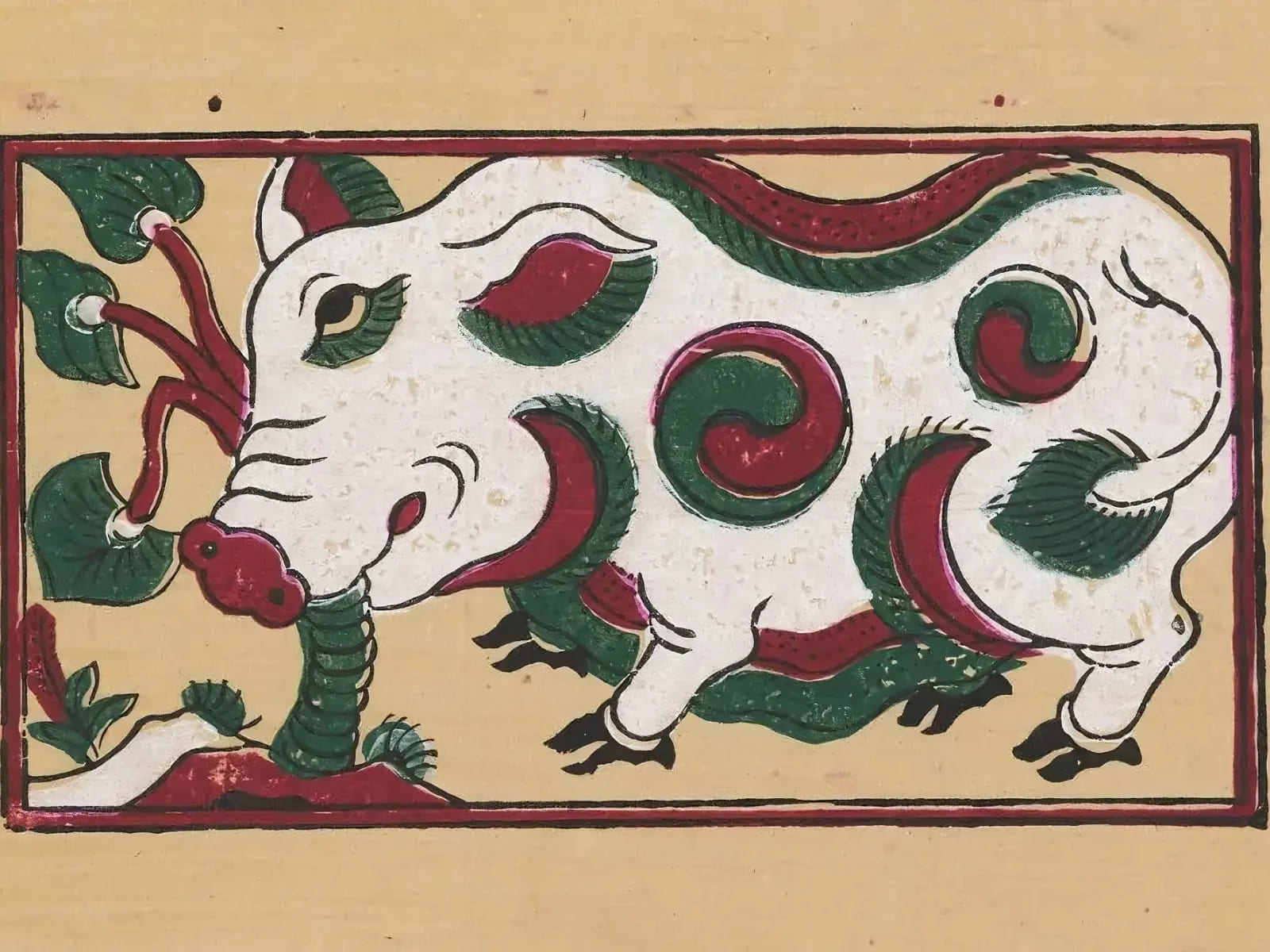
To safeguard Đông Hồ folk art, actions must span individual to communal levels. Here’s a practical guide:
- Support Traditional Artisans: Visit Đông Hồ village, purchase directly from families like Đào Văn Can or Nguyễn Đăng Chế. This sustains livelihoods and ensures authentic production.
- Apply Modern Technology: Use 3D printing for woodblocks or AR apps for virtual experiences, as in Vietnam Museum of Ethnology projects, making art interactive and accessible.
- Education and Dissemination: Host drawing workshops, integrate into curricula to teach youth values. YouTube tutorials on Hứng Dừa techniques have garnered thousands of views, fostering new enthusiasts.
- Safe Personal Collection: Opt for handmade prints over fakes; store in dry, shaded areas to preserve natural colors, extending lifespan for heirs.
- Join Community Projects: Support annual Đông Hồ Painting Festival in Bắc Ninh or campaigns like “Reviving Đông Hồ Paintings” by artisan Đào Văn Tâm, boosting tourism and awareness.
Preservation revives not just art but economies, creating jobs and promoting cultural tourism. For Hứng Dừa, it connects youth to origins, transforming an old painting into fresh creative inspiration. Imagine your child sketching in its style—reviving family tales. That’s preservation’s power, ensuring Vietnam’s folk art thrives in a globalized world.
Dong Ho Hung Dua: An Eternal Heritage in Vietnamese Hearts
Through exploring Đông Hồ Hứng Dừa—from its history to meanings—we see it’s not mere art but Vietnam’s soul. As a culture enthusiast, I believe each such painting deserves cherishing and sharing.
If seeking an authentic Hứng Dừa, start at Đông Hồ village—where strokes breathe life. Share this story with friends, preserving heritage together. What’s your favorite Đông Hồ folk painting? Comment below!
